If you’re familiar with probiotics or fermented foods, you’ve probably heard that they offer your gut mega health benefits because they contain “friendly bacteria”, or probiotics.
When a certain food or substance is fermented, it simply means that it’s been broken down, or “pre-digested,” by bacterial cultures. During the fermentation process, various strains of bacterial cultures are left behind (1). These bacterial cultures are called probiotics, or friendly bacteria, and they help support digestive function and gut health.
The most popular fermented foods are sauerkraut, coconut milk yogurt (or regular yogurt if you include dairy products in your diet) and kimchi. But there’s one ancient fermented beverage that’s gained even more popularity amongst health experts and nutrition enthusiasts, and that’s kombucha.
Do you struggle with bloating, gas, constipation, or other digestive issues? We’ve created a FREE guide to healing your gut naturally.
Click here to get your FREE copy of our Digestion Guide!
What Is Kombucha?
Simply put, kombucha is a fizzy, living tea. In fact, the name kombucha means “Fungus Tea”. But don’t let that gross you out – fungus tea tastes delicious and has plenty of health benefits to offer.
Kombucha is made from a sweetened black or green tea and a bacterial culture, called a SCOBY. SCOBY stands for “symbiotic colony of bacteria and yeast.” The culture is a round, slimy substance that certainly isn’t the most visually appealing thing you’ve ever seen, but it contains all the bacterial cultures necessary to turn regular green or black tea into a probiotic-packed, fizzy fermented health beverage. And if you’re a little concerned about what this magical brew might taste like, you’ll be pleasantly surprised. Kombucha has a slightly tangy taste that still contains hints of green or black tea, and it can be flavored with different types of fruit, herbs and citrus.
During the kombucha fermentation process, the bacteria produce a substance called acetic acid. Acetic acid gives fermented foods their signature sour taste, and also contains a plethora of its own unique health benefits. In fact, if you’ve ever heard that fermented apple cider vinegar is an effective natural remedy for fungal and bacterial infections, that’s because it contains acetic acid (2).
The Health Benefits of Acetic Acid in Kombucha

Acetic acid has also been shown to have additional health benefits when consumed regularly, such as aiding in sustainable weight loss and preventing fat gain. Acetic acid has also been shown to inhibit the growth of harmful bacteria such as E. coli, improve the absorption of essential minerals such as calcium, and remove warts (4)(5).
Other Remarkable Health Benefits of Kombucha
While more research is required to analyze all of the health benefits kombucha has to offer, here are the findings of studies so far.
- Detoxification — When a food or beverage is fermented, the bacteria and yeast cultures can also enhance the bioavailability of already existing nutrients. Since the green or black tea that kombucha is made from naturally contains a class of antioxidants called polyphenols, the bacteria may help increase the overall polyphenol content during fermentation (7).Polyphenols are plant compounds that act as antioxidants to help protect cellular health. Polyphenols have been shown to prevent against the illness and disease that can result from the toxins we’re exposed to on a regular basis (8).
-
- Improved Digestion — Since kombucha is an unpasteurized beverage, it is considered “raw” or “living.” Perhaps you’ve heard about the benefits of adding raw foods to your diet. One of the reasons raw foods are so beneficial to health is because they contain enzymes that help us digest the foods that we eat. When enzymes are exposed to high heat or temperatures above 108F, they are destroyed. This is why cooked food contains far fewer digestive enzymes than raw food.During the fermentation process, one of the by-products of the bacteria is enzymes. Since kombucha hasn’t been exposed to high temperatures, it still has its enzymes intact, which can help support the digestive process.In a study done on ten different herbal teas, the enzymatic activity of digestive enzymes more than doubled when fermented with the kombucha bacterial culture (the SCOBY), which shows that kombucha is a beverage that supports overall digestive function (9).
- Immune System Support — Not only do the probiotics in kombucha aid in digestive function, they also help strengthen your immune system (10). This is because approximately 70% (or more) of your immune system is found in your gut (11).You see, we have both good and bad bacteria naturally occurring in our guts. Both varieties are needed for optimal health. However, the bad bacteria can become a problem if they start to overgrow and outnumber the good bacteria, which can happen with high sugar diets, frequent antibiotic use, and stress. An overgrowth of bad bacteria suppresses the immune system and can create the perfect environment for illness and disease to thrive in.
Therefore, regularly adding probiotic foods to your diet, such as kombucha, can help keep bad bacteria in check, which keeps your immune system healthy.
- Improved Mood — The probiotic cultures found in kombucha may help promote a healthier mood. This is due to the fact that beneficial strains of bacteria in the gut have the ability to synthesize B vitamins, such as B2, B9 and B12 (12). And several of the B vitamins are needed to support a happier, stable mood.
- Increased Nutrient Absorption – The probiotics found in kombucha have been shown to improve the bioavailability and absorption of essential nutrients, such as vitamins and minerals, in the digestive tract (13).
Where Can You Get Kombucha?

A less expensive way to drink kombucha regularly is by making your own at home. You can easily make your own brew (and customize it with your favorite fruit-infused flavors) by obtaining a SCOBY. SCOBYs aren’t typically sold in natural food stores (at least not at the time of writing), but most health stores have resources for local fermentation groups that sell the cultures.
How Much Kombucha Should You Drink?
Since kombucha is a health drink, it’s considered safe to consume daily (14). However, it’s always best to check in with your doctor or healthcare practitioner before adding any new health food to your diet, as some prescription medications can negatively interact with certain foods.
In addition to kombucha, you can also consume other fermented foods such as apple cider vinegar, sauerkraut, coconut milk yogurt, coconut milk kefir, and kimchi to add extra probiotics in your diet.
Kombucha Cautions
While kombucha health benefits are certainly becoming better known, there are a few cautions to be aware of. When making kombucha at home, it’s possible for the SCOBY to become contaminated with mold during the fermentation process. Not only is mold sufficiently unappetizing, but it’s toxic to the human body and can lead to allergic reactions and respiratory problems (15). So, it’s always best to keep an eye out for kombucha that doesn’t look quite right.
There are a few contributing factors that are said to promote the growth of mold on a SCOBY, such as insufficient measurements of ingredients (especially sugar) and keeping your kombucha in cold temperatures, rather than the warm temperatures it requires to properly ferment.
A moldy SCOBY will turn your brew from a light tan color to a dark black and green color, with mold spots that look similar to the mold you find on bread. It will also be characterized with a foul smell (regular kombucha should smell similar to vinegar with a hint of sweet). So, if something seems off with your kombucha, be sure to toss this batch right away and get started on a remake with a new SCOBY.
Since the risks of kombucha are not yet known, it’s best not to use kombucha therapeutically. As mentioned, it’s always best to check with your doctor before consuming kombucha, especially if you have any pre-existing health conditions.
Best Kombucha
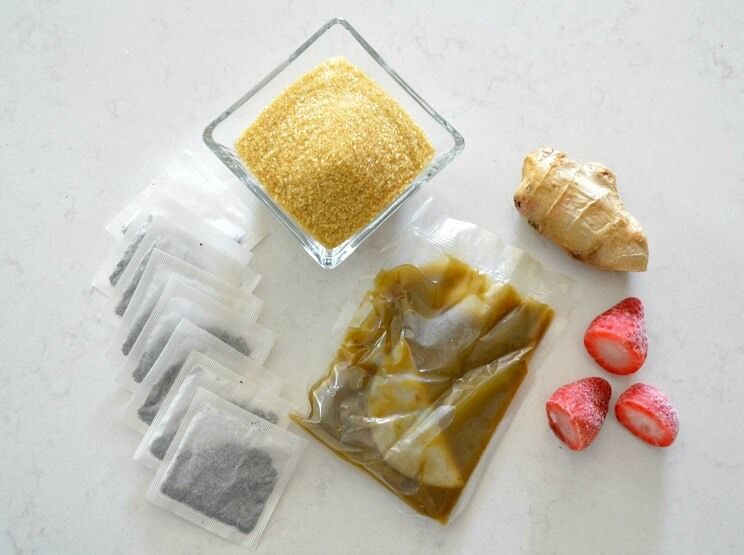

Best Kombucha
Ingredients
- 6 green tea bags
- 1 cup sugar
- 1.5 cups unflavored starter tea
- 1 SCOBY
- A stock pot
- 1-gallon glass jar or two 2-quart glass jars
- Glass bottles
- Flavorings like fruit, ginger, herbs, or juice
Instructions
- Bring the water to a boil in your stockpot. Take it off the heat and stir in the sugar. Add the tea bags and let it steep as the water cools.
- Once the tea mixture is cooled, take out the tea bags and add the starter tea. This step is important as it will acidify the mixture so that no bad bacteria can take hold before fermentation starts.
- Pour the tea/starter mixture into your brewing jar(s) and put your SCOBY in using clean hands. Secure some cheesecloth or paper towel over the top of the jar(s) with an elastic band.
- Put the jar somewhere out of direct sunlight. Leave it for seven to 10 days.
- Starting around seven days, pour out a bit of the kombucha every day and have a sip. When it tastes just right to you, you can bottle it or pour it into storage jars to keep in your fridge.
- If you plan on making another batch, now’s the time. Follow the steps to prepare the tea mixture and transfer the SCOBY (and two cups of this batch of kombucha) into the cooled tea/sugar mixture of the new batch. Make sure you’ve washed the jar for this fresh batch! If the SCOBY is getting really thick, carefully peel off a bottom layer.
- To flavor your finished kombucha, you can use herbs, juice, or fruit in some soda bottles or swing-top jars. Leave about half an inch of room at the top when you pour in the kombucha. Let it sit for one to three days at room temperature; if you’re using glass, please check it often to make sure it isn’t getting too carbonated. You don’t want your bottles to explode!
- Store the kombucha in the fridge for up to 1 month.
Tips:
- To accelerate cooling your tea, put the pot in an ice bath.
- Make sure you cover your kombucha with a cheesecloth, paper towel, cotton tee shirt or coffee filter and secure it over the jar with an elastic band. This keeps out dirt and insects.
- When fermenting your tea, you’ll probably see a new, cream-colored layer growing at the top of the liquid. This is normal, as is stringy brown pieces that trail under the SCOBY, sediment at the bottom, and bubbles.
- If you ever see mold, or if it starts to smell rotten or cheesy, throw out the SCOBY and the kombucha and start again with a fresh SCOBY. A healthy kombucha starts off smelling like tea and smells progressively more vinegar-y as time goes on.
- Do not touch the SCOBY with metal and do not store the kombucha in metal containers. This can affect the taste and will damage the SCOBY.








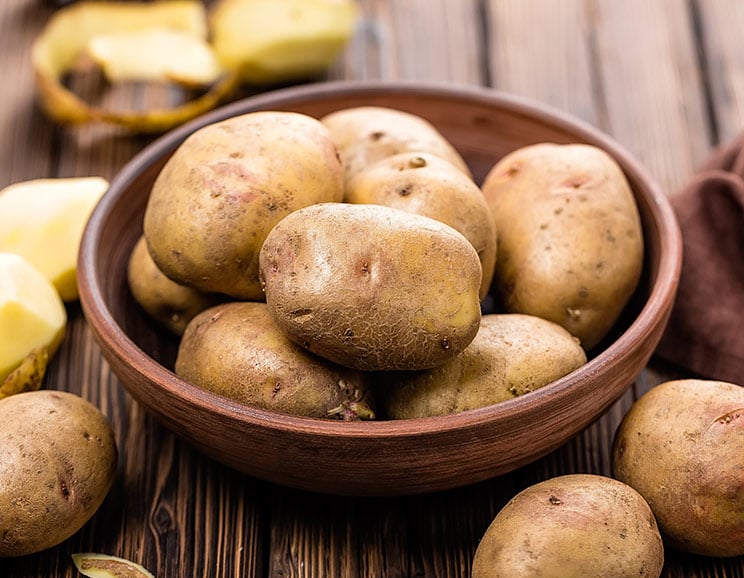 Are White Potatoes Paleo?
Are White Potatoes Paleo?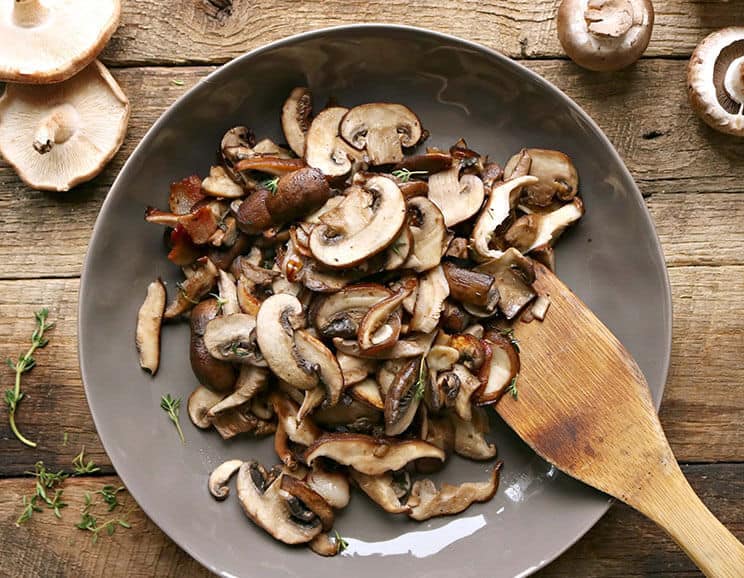
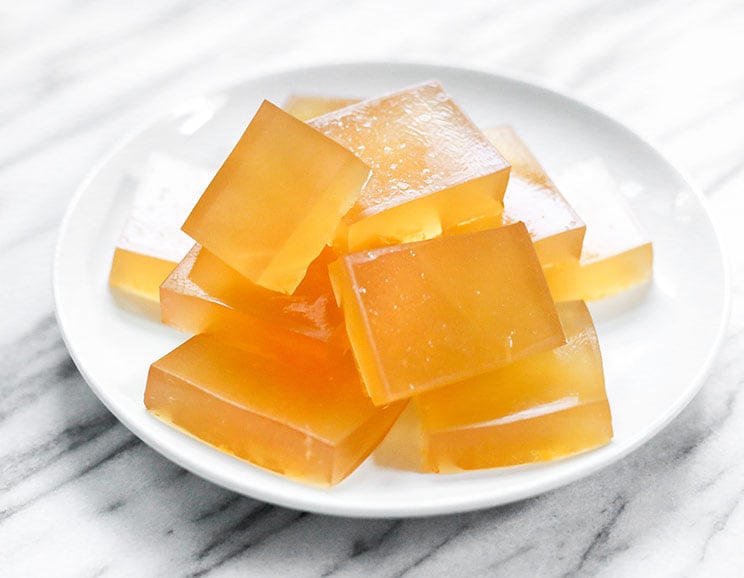

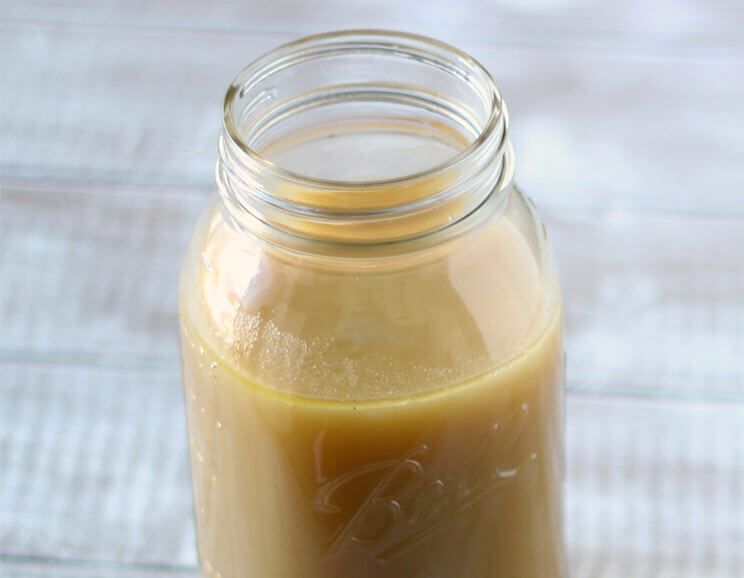





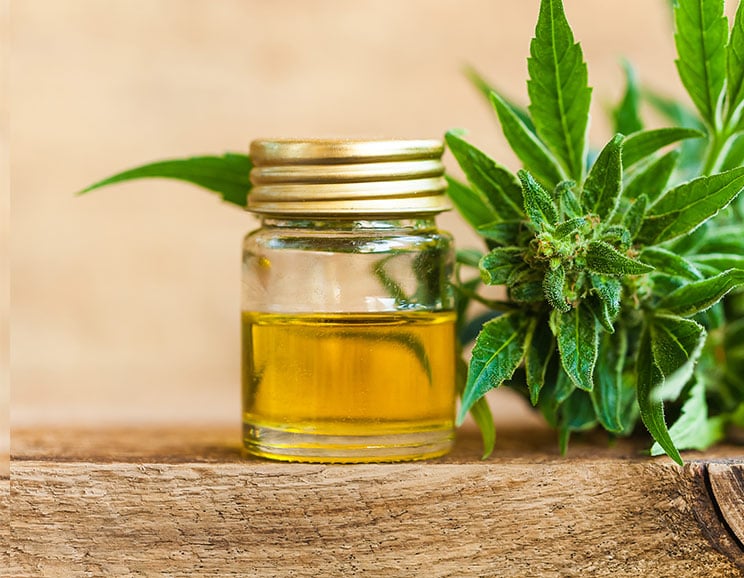
Show Comments